
GRUNDIG
4095 a
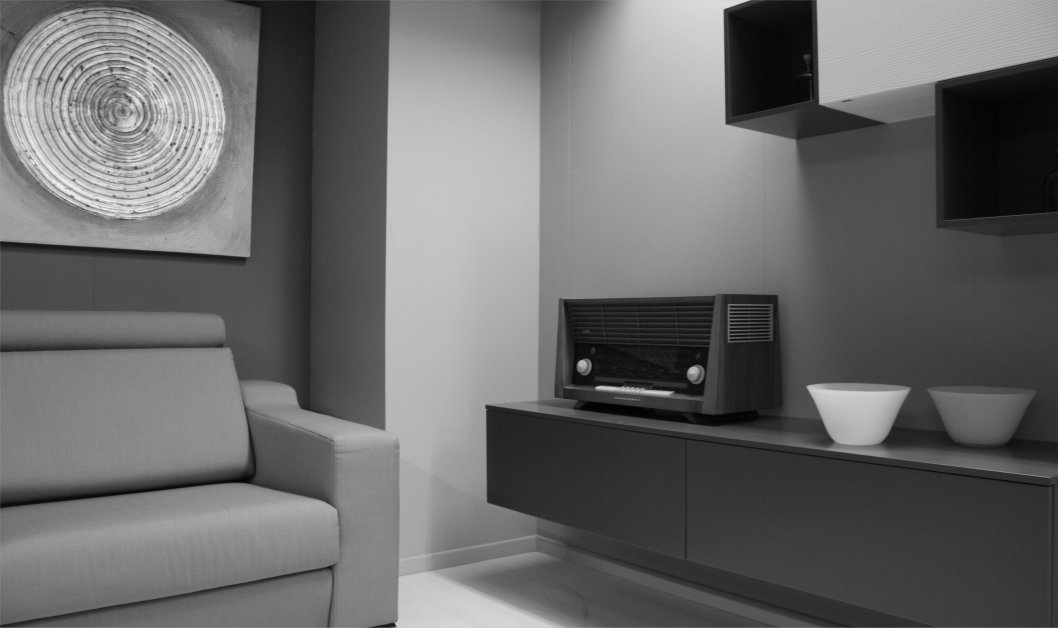

The design
was used in some rare devices previous very daring.
An interesting example is the Tonfunk (in fact subsequently absorbed by
Grundig) Violetta Lyra 1955, visible in the image on the right.
In my opinion the 4095 is the big capacity of synthesis of Grundig designers.
They design evoke the sinuous forms of Lira while maintaining clean lines,
which they did at the time, growing old hit most other radios on the market.
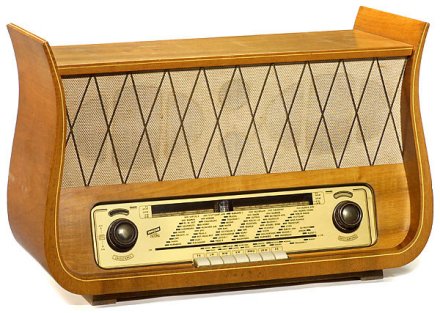
Eveneti Cefalee Campania
Some
stylistic solutions typical of this model were then adopted also by many
other manufacturers for a long time.
For instance, the wooden frontal fillets designed to protect the speakers
will be used in appliances and speakers until the '70s.
Even the golden color of the cabinet along with the four-sided and sharp
lines will denote the most of the forthcoming production as a leitmotif.
Although
clear cabinets are particularly difficult to recondition, the restitution
works carried out on this piece are of course at the usual top level.
The sound:
The final stage consists of a pair of EL95 counter phase pentodes coupled
to the four magnet Alnico speakers disposed on all three sides of the
unit, releasing a remarkable powerful and sharp performance.
A sophisticated advanced counterforce circuit drastically reduces the
distortion, and a five band adjustable and separated equalizer allows
choosing the desired frequency response.
In particular, listening from digital sources is quite delightful.
You
can also connect a digital source, and play it with the cable I built
for that.
For its
essential shape softened by the warmth of the wood it is made with, this
unit perfectly matches with modern or minimal furnishings.
Let’s
images speak!
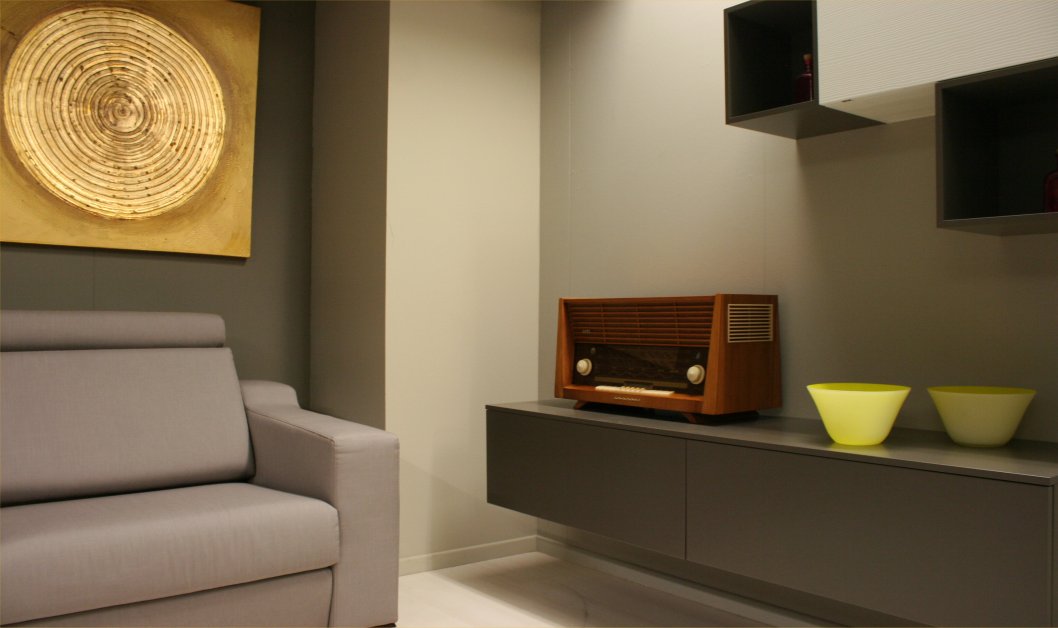
1930
- At 22 years old Max Grundig begin a radio repair business.
1939 - The II world War start. Grundig works primarily for the Wehrmacht
and repair of telecommunication equipment.
1945 - Immediately after the war, the demand for repair work was very
great. Max Grundig built the first two Grundig appliances: the Tubatest
tube tester and the Novatest testing device.
1947 - Start the sale of a kit radio, the Heinzelmann. The unit is the
basis of success, sold more than 15,000 pieces.
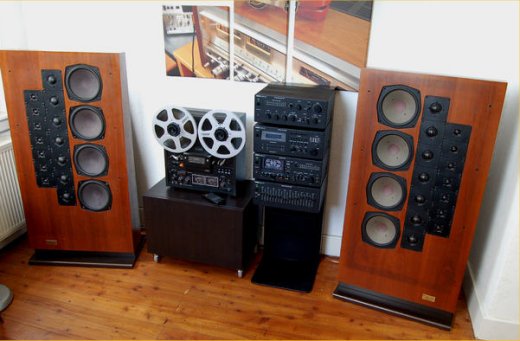
1950
- Very high frequency (VHF) is introduced to Germany and places new demands
on the industry. Grundig launches the 380 W on the market.
1952 - The first television channel starts up in Germany. After intensive
research, Grundig launches the FS 080 onto the market. In the same year
the first portable tape recorder Reporter 500 L is created.
1956 - After a lot of radio produced with progrssively high performances
was produced the Concert Radio 5080 equipped with an equaliser, which
has five controls and a visual display.
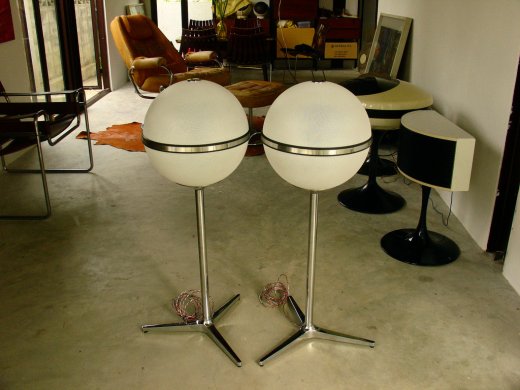
1970 - The Audiorama 7000 Hi-fi was produced, it has twelve dynamic speaker systems in one speaker.
1976 - The Reel Tape Recorder TS 1000 is equipped for semi-professional use.
1980 - The slim-line Hi-fi Tuner ST 6000 and the Monolith Hi-fi Dynamic Flat Top Antenna, which has 22 speaker systems, are two particularly popular appliances in the new hi-fi range.
1984 - After severe drop in sales Philips increased its stake in Grundig 31.6 percent and takes over the corporate management.
1997 - Philips pulls out of its involvement with Grundig.
2003 - The company files for bankruptcy.
2008 - Turkey's Koç Holding took full ownership of Grundig Multimedia B.V., the parent company of Grundig Intermedia GmbH in Nuremberg.
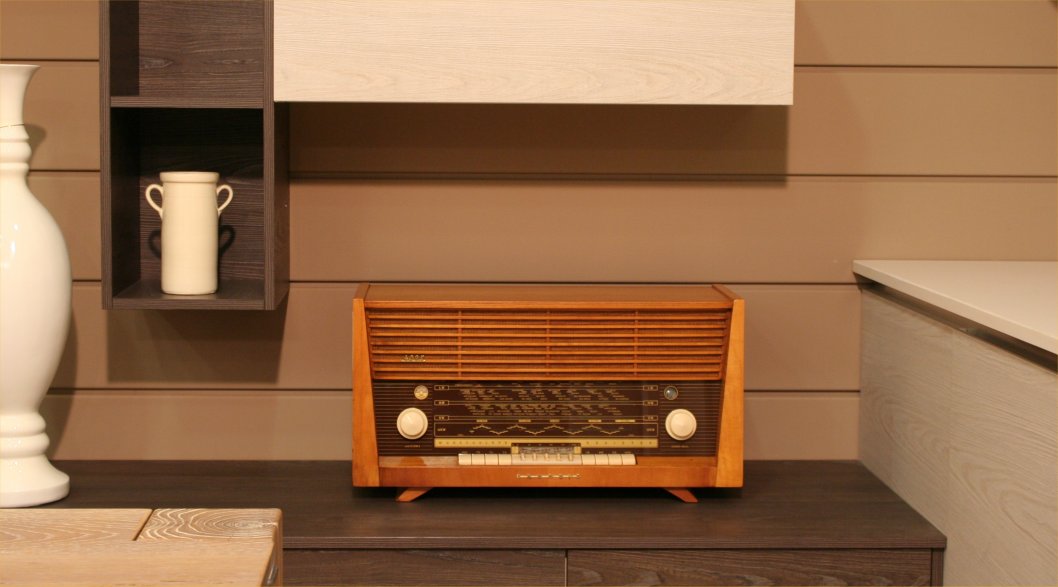
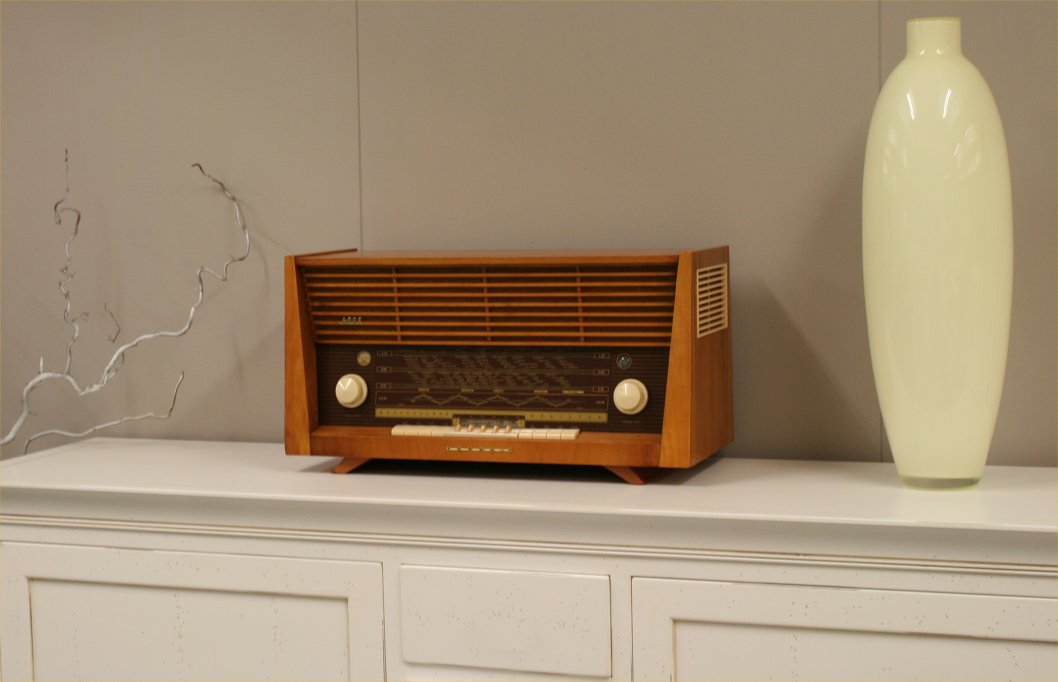
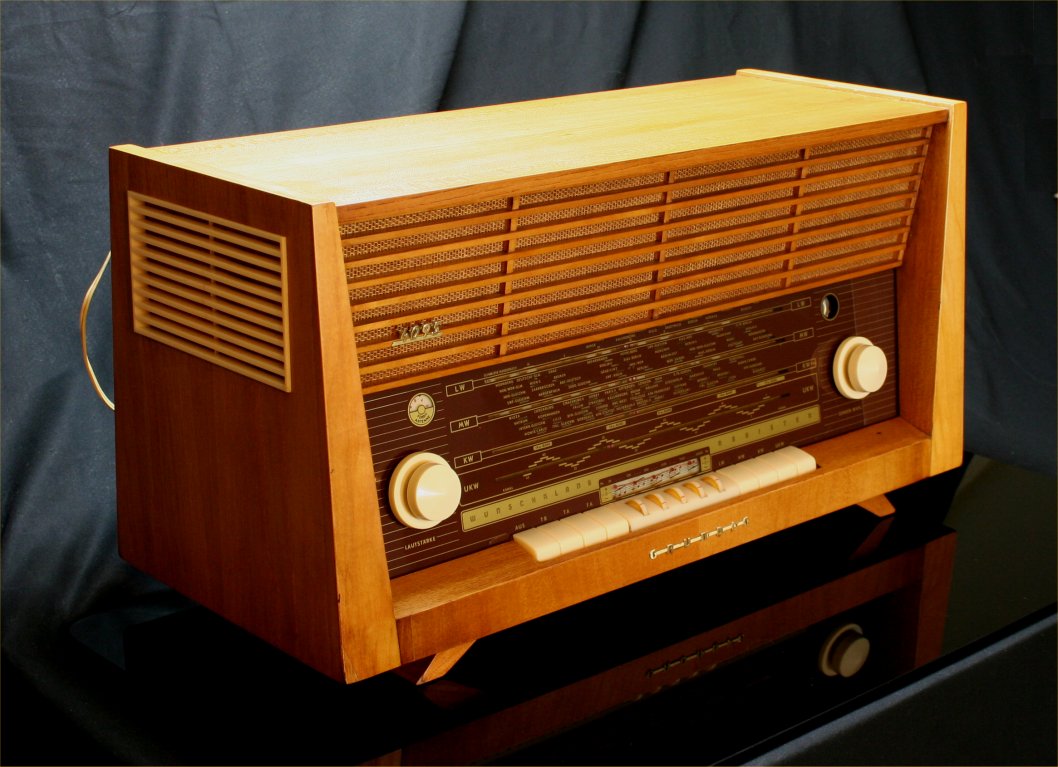
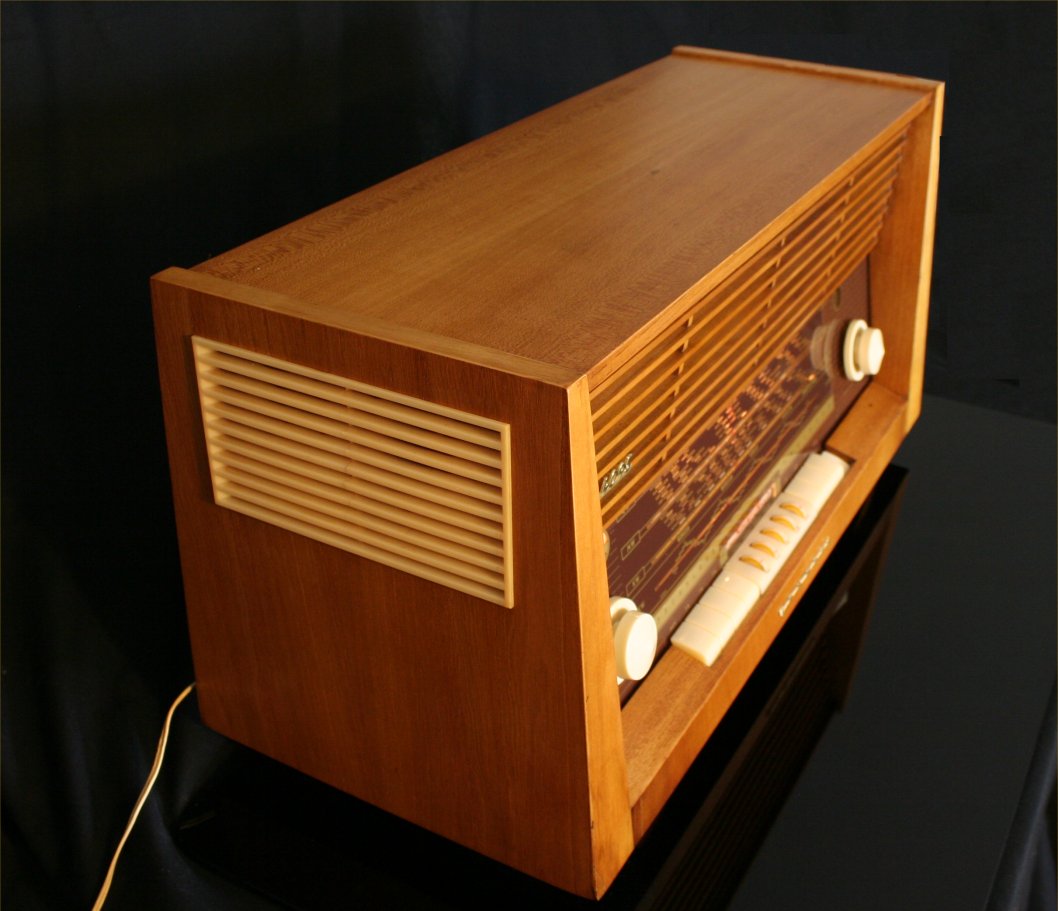
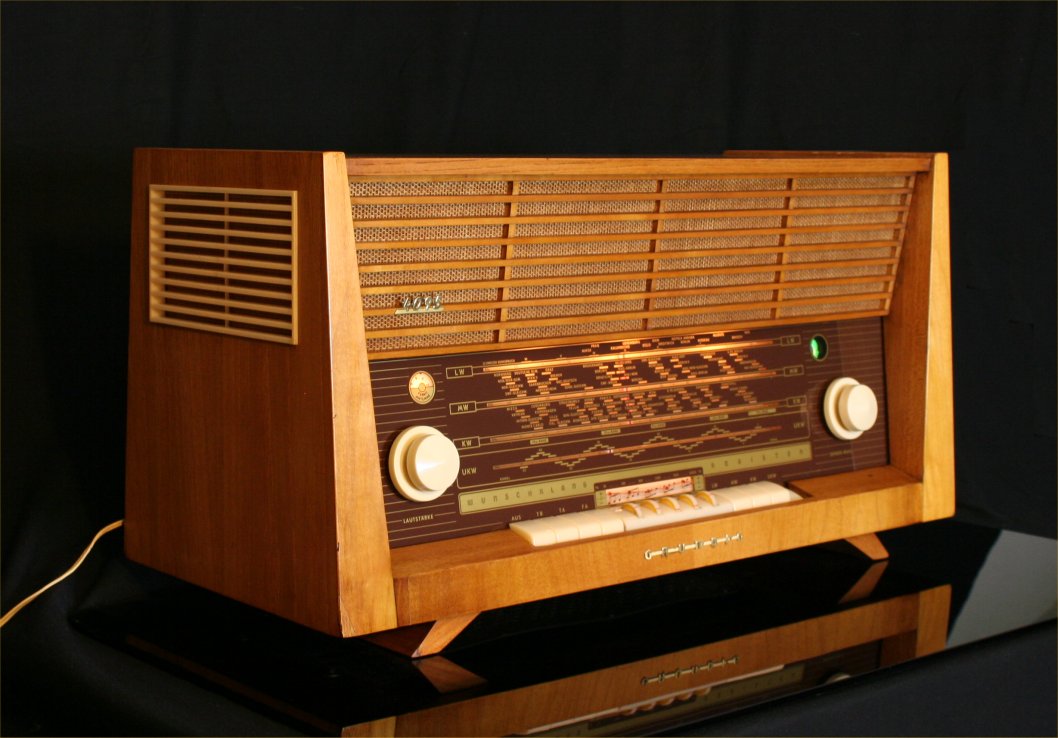
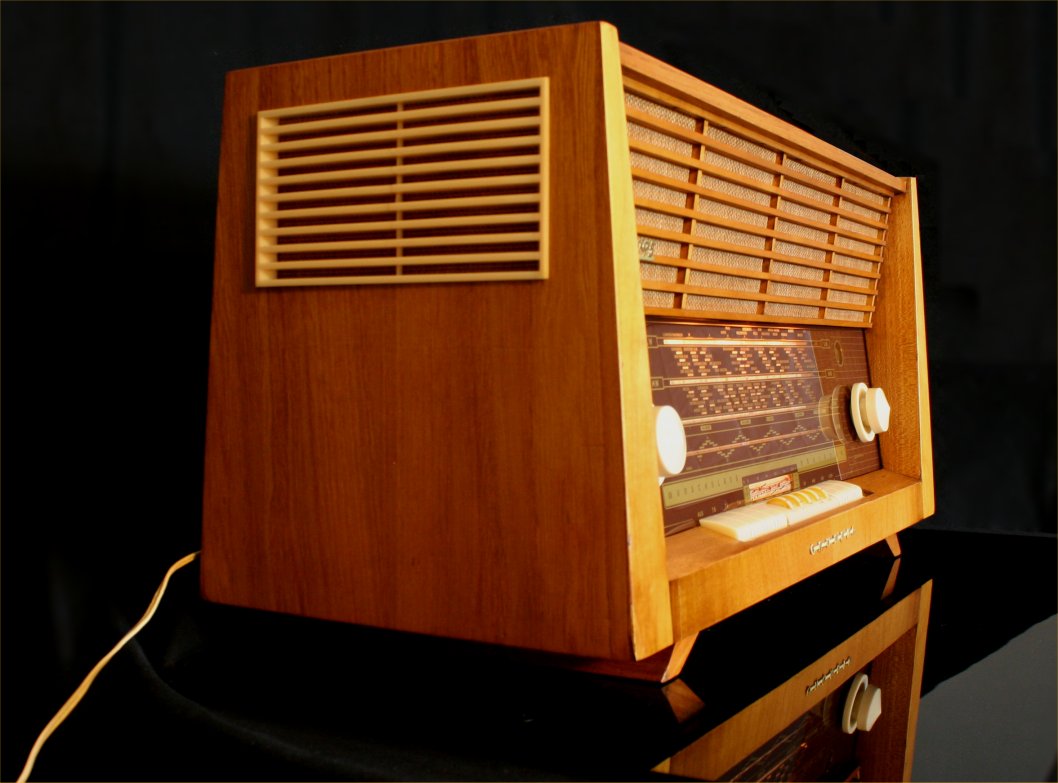
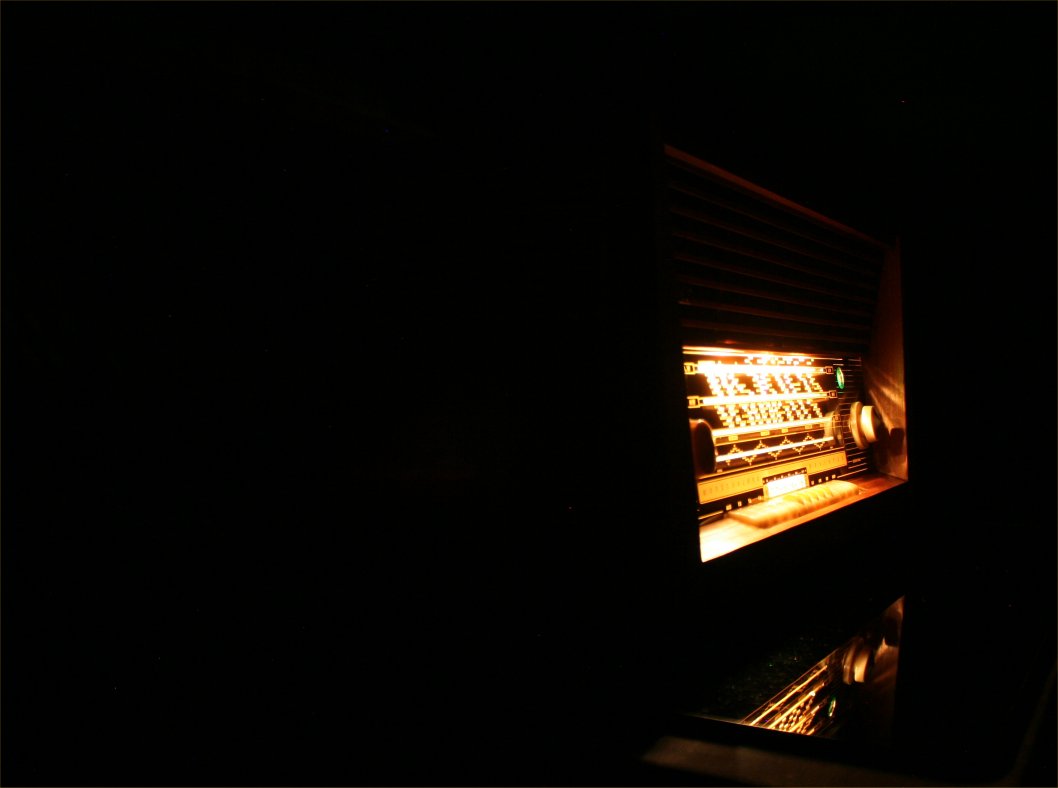
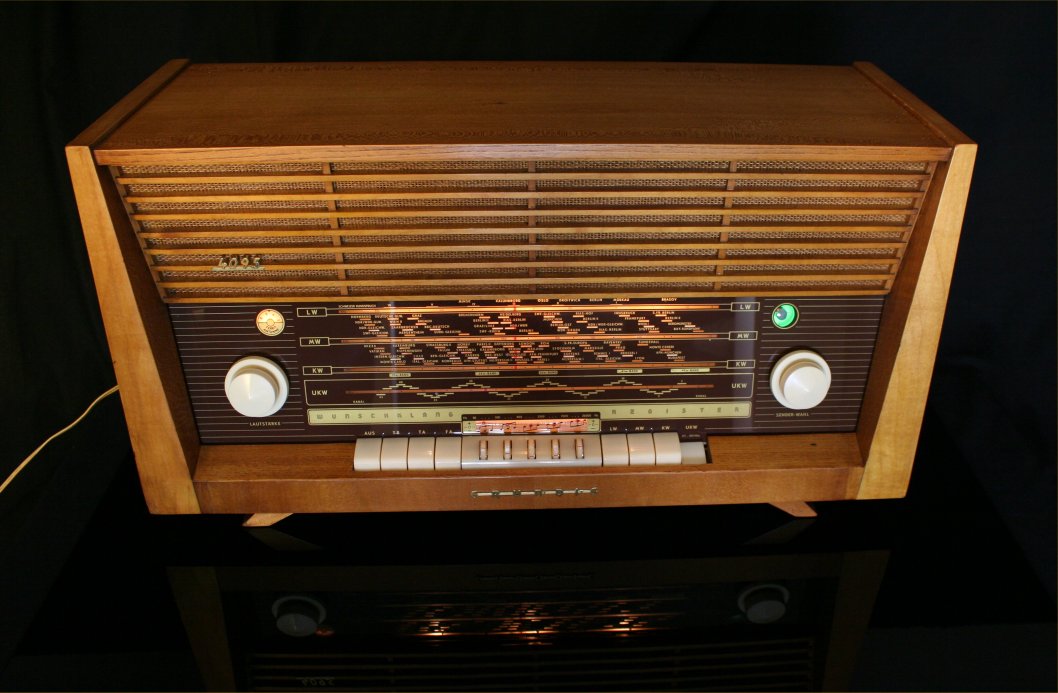
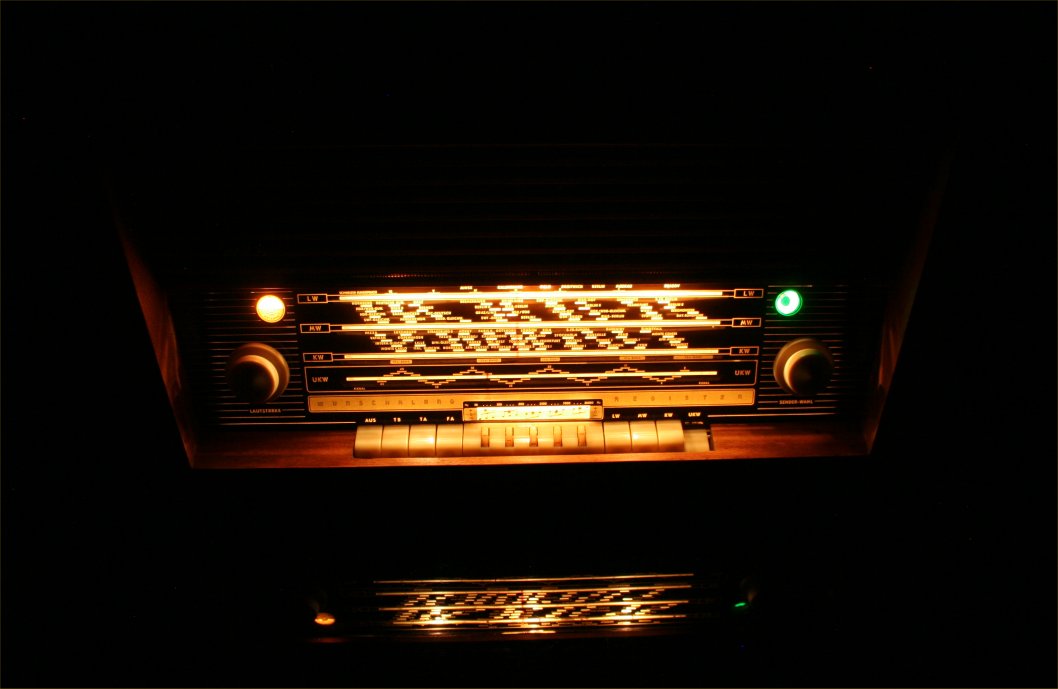
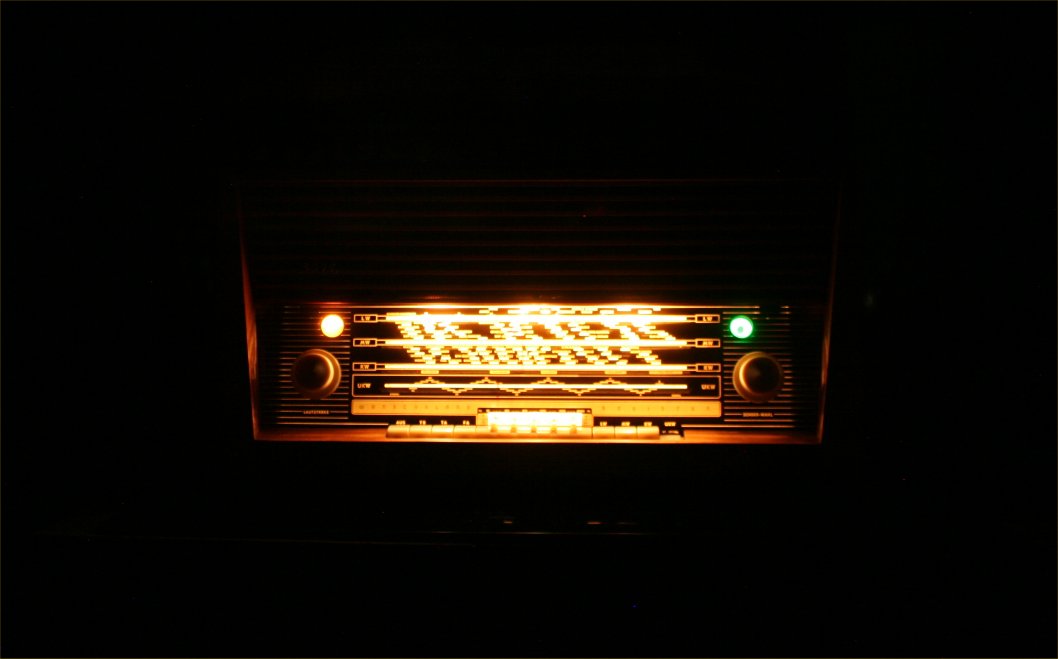
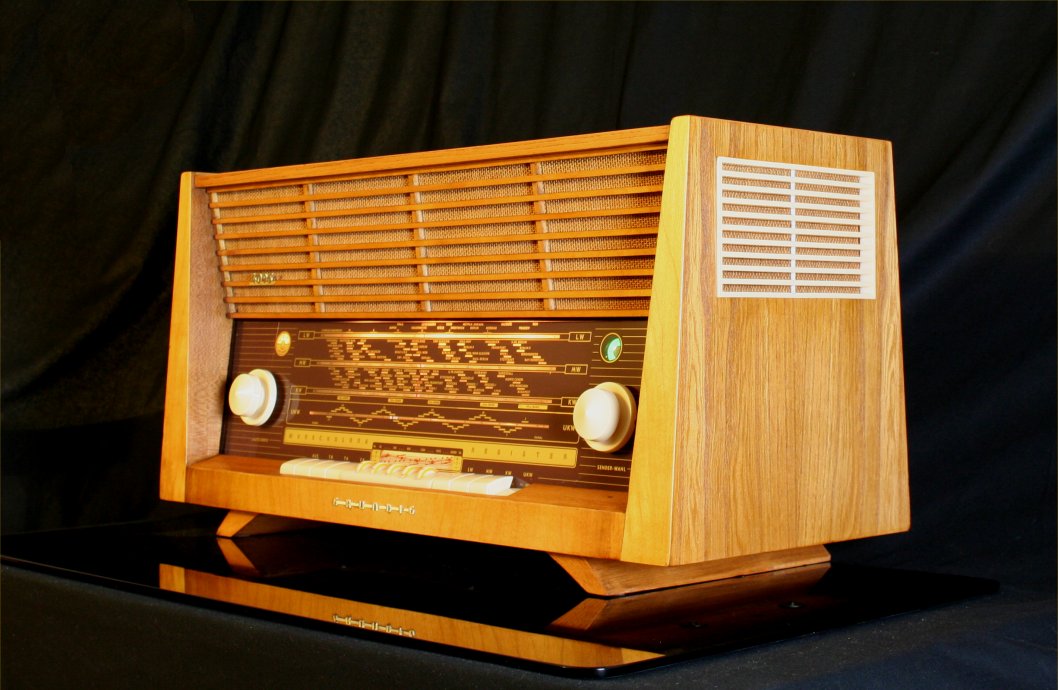
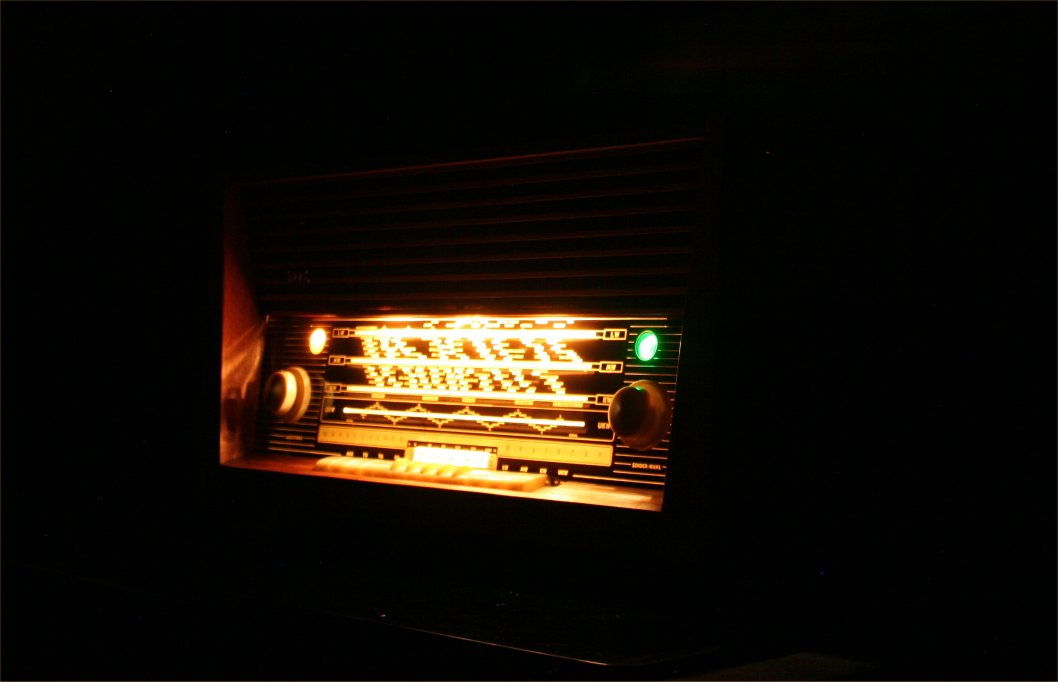
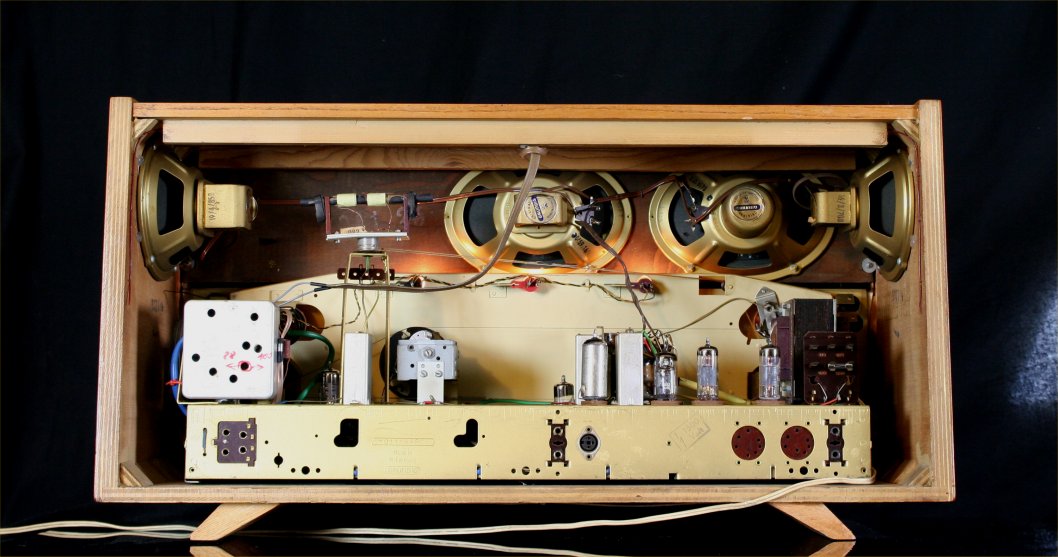
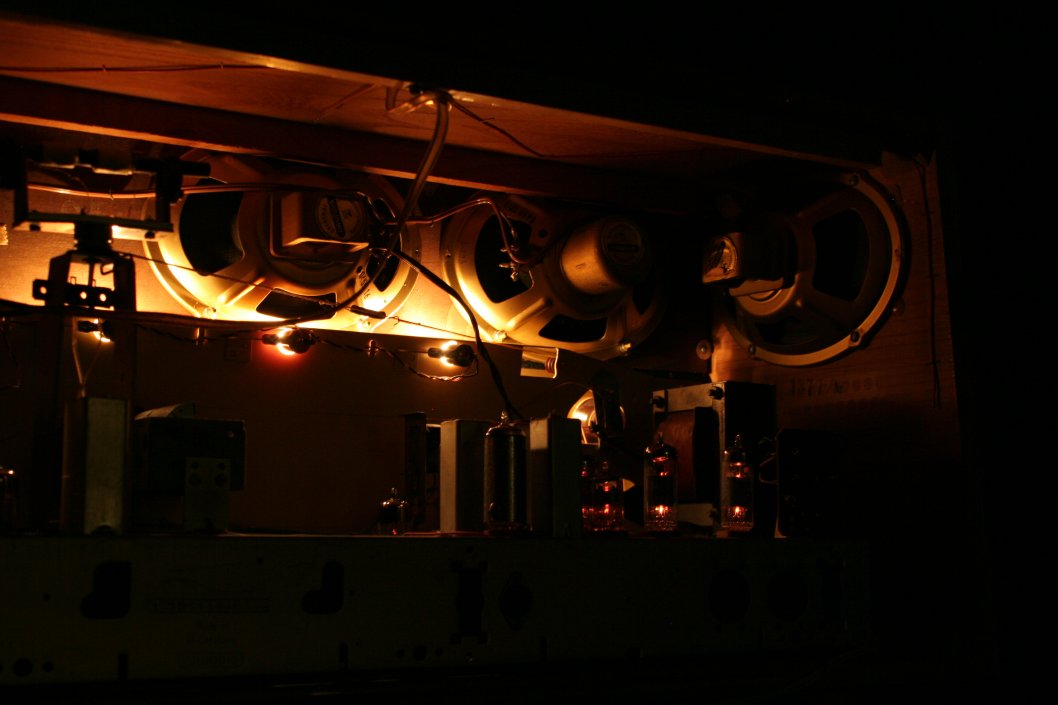
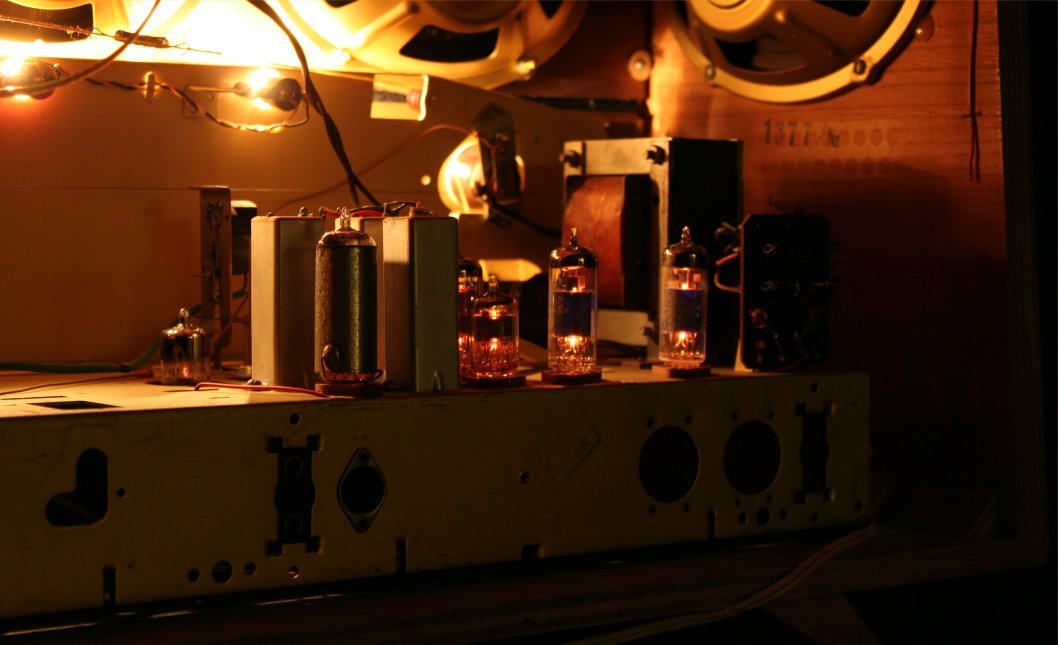
Superheterodyne IF 460/10700
8
AM Circuits
13 FM Circuits
Wavebands:
Medium Waves (OM)
Long Waves (OL)
Short waves (OC)
FM (UKW)
Operating
voltage (CA)
110; 125; 160; 220 Volts
4
wideband speakers
Dimensions
(LHD):
26.8 x 13 x 14.2 inch
Net
weight: 37 lb 0.1 oz
9
tubes:
ECC85, ECH81, EBF89, EAA91, EM34, EC92, ECC83, 2xEL95
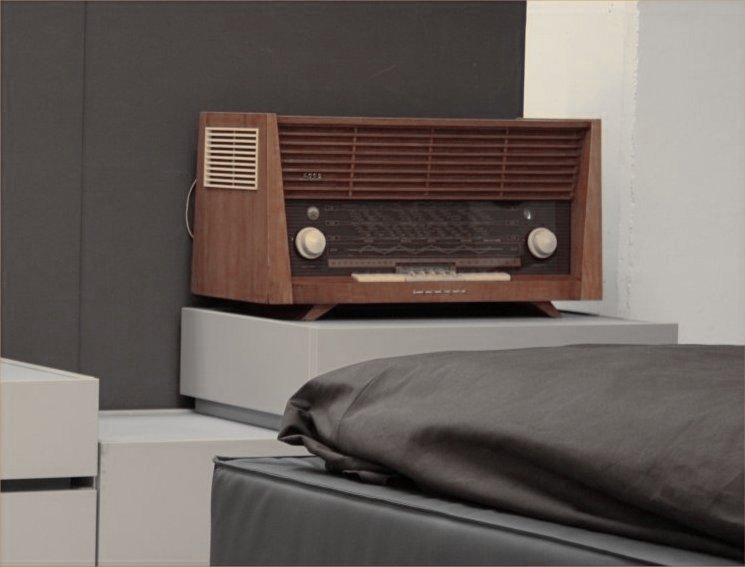
EQUALIZER WITH LEVEL INDICATION
The
tones control system is a jewel. The device is equipped with a 5-band
equalizer.
A red thread mark the position of the potentiometers and draws the chosen
equalization curve.
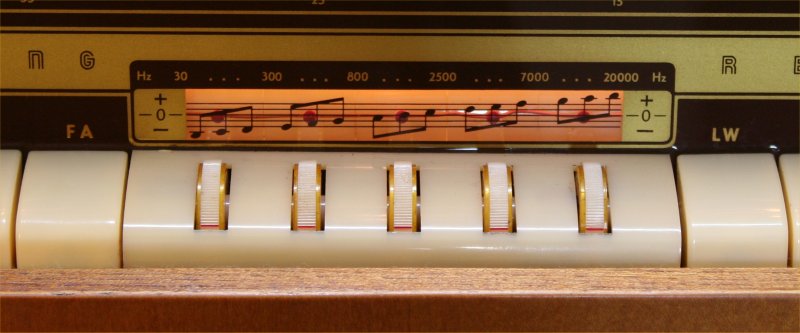
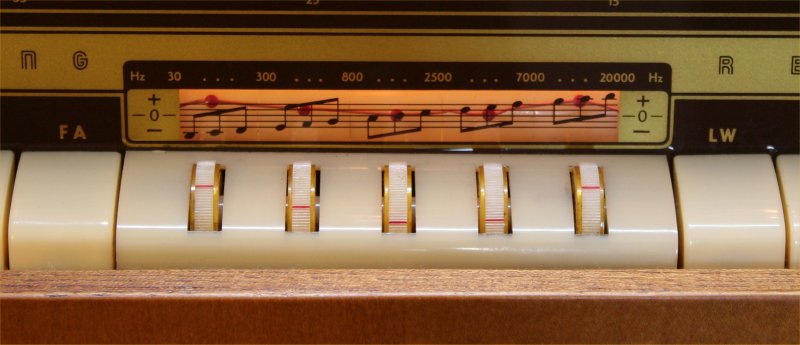
AERIALS
Ferrite
rotating antenna with window indicates its position.
The ferrite antenna rotates by means of a large knob situated behind the
volume knob.
Inside the cabinet there is a dipole for FM and an orientable ferrite
antenna for AM reception.
The receiving sensitivity with internal antennas is very good.
Using an external antenna, sensitivity is amazing.
This unit was in fact produced in a period when there were not many radio
stations and those available fairly apart from each others.
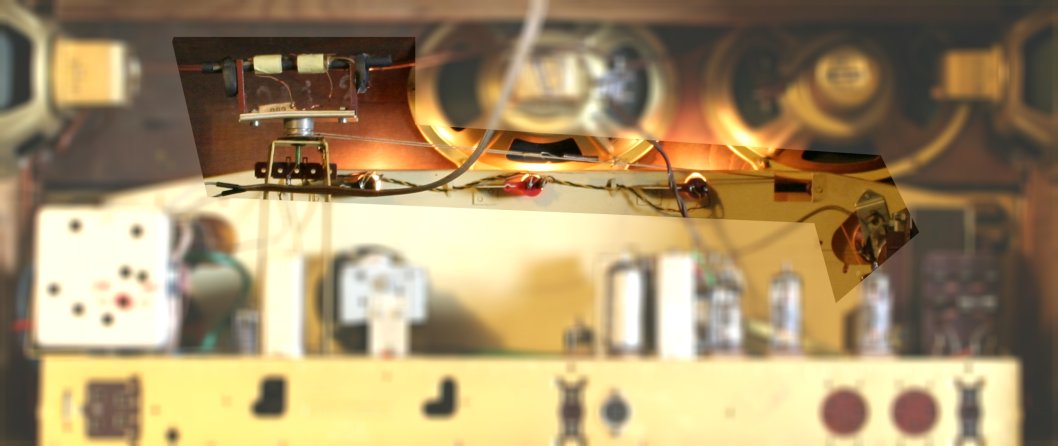
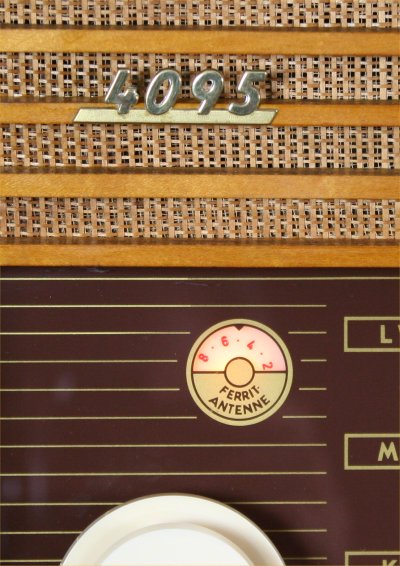
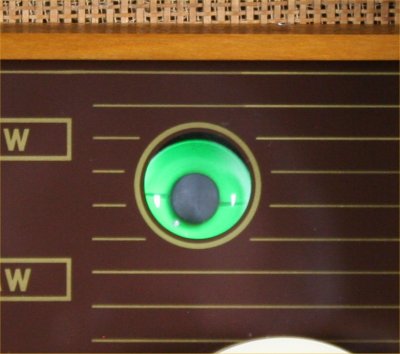
SEPARATE CONTROL TUNING BETWEEN AM AND FM
The tuning
system is another gem.
The unit is equipped with mechanisms for keeping separate the AM bands
by each of the other two FM bands.
The tuning knob is single but a selector switch commutes into cable systems
(all in steel) and pulleys separated depending on the band.
CONTROL PANEL
The volume
control is on the left (with built-in loudness) and axially, the command
of the ferrite antenna rotation.
Above this knob you can see the indicator of the position of the antenna.
After we find the display for Long Medium and Short AM waves, and the
FM scale and the magic eye that indicates the perfect tuning of each station.
Finally, the movement of the tuning knob is very pleasant being supported
by a large flywheel.
Below, from left, there are, in order of appearance, the power buttons,
tape recorder, record player, internal AM aerial, the five equalizers
knobs, the keys for tuning Long, Medium and Short Waves, FM.

LOUDSPEAKERS
The speakers
three are seats on all sides of the radio so you can hear correctly the
sound from any position.
The four Multioktav loudspeakers are produced from Grundig.
The sound is very strong, bass not too long and clean treble.
With some differences this solution was taken from Bose, some years later.
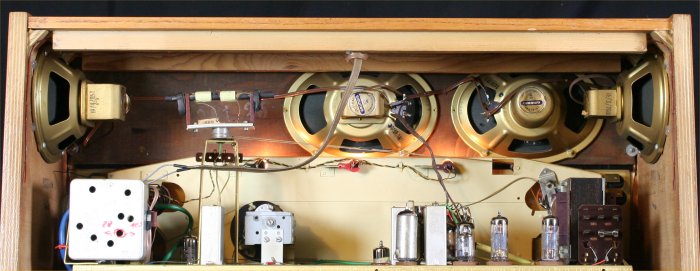
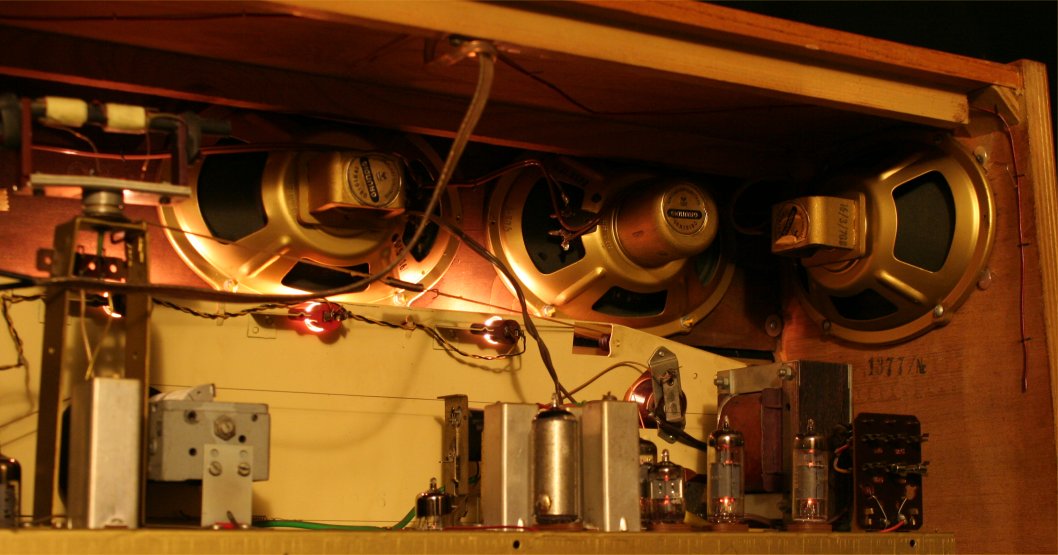
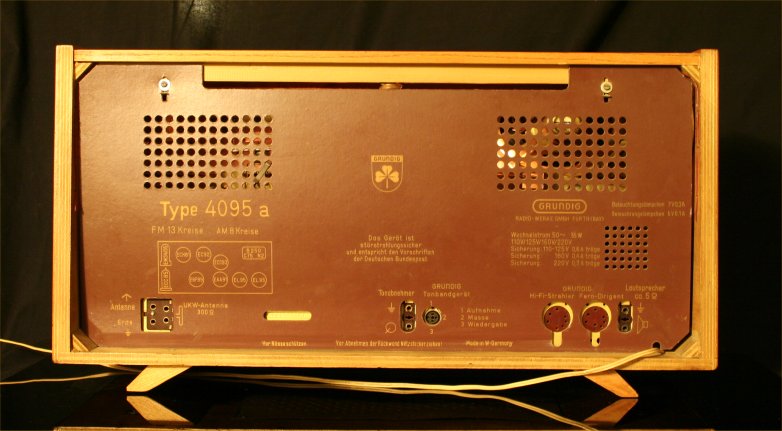
REAR SIDE
Output
for external speakers.
Socket for recorder (tonbandgerat).
Turntable input (Tonabnehmer)
AM and FM antenna inputs and ground socket.
Remote control sockets
All photos of the restoration works have been lost due to the failure of my Hard Disk - The restoration can not be documented
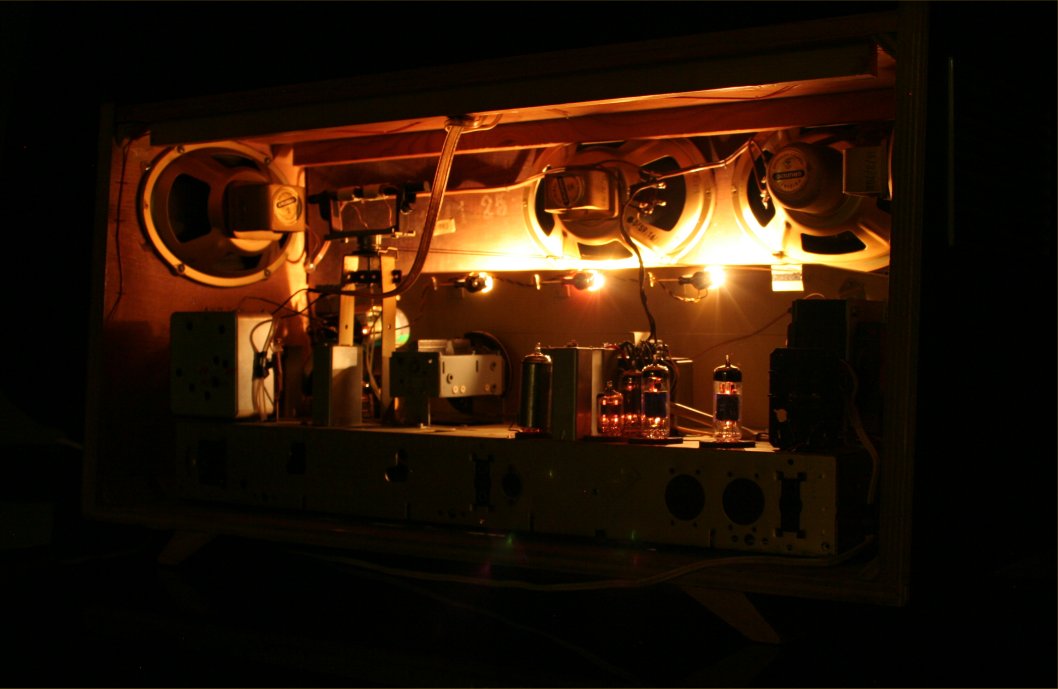
CONTACTS
ITALIA
& Technical, Info
Email: Giovanni
- Cell: +39.331.6016062
INTERNATIONAL
Business
public relations Asia - Australia - Email:
Giuliana
Business
public relations Europe - America - Email:
Lisa
- Ph +1 937 825 0433 Ohio
- USA